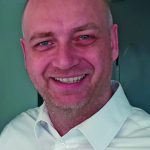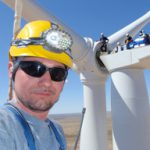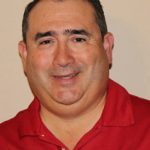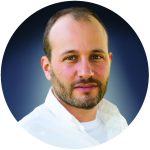As you celebrate the company’s 30th year in business, tell us how it all began.
Second Wind was founded by two men who had known each other since childhood, Kenneth Cohn, who trained as a metallurgist, and my husband Walter Sass, who is an electrical engineer and the company’s executive chair and CTO. They decided that they wanted to be involved in something that was good for the environment, and wind power was clearly the right choice. Remember that this was in 1980, and they found that people were making siting decisions by walking around feeling the breeze on their faces, looking for trees that had been bent over by the high winds, or by mounting anemometers onsite for a short period of time. They saw a need to fill, and a year later they introduced the AL-2000, which was the first data logger designed specifically for the wind industry.
A few years later they realized that, just as wind turbines weren’t being sited with good information prior to the AL-2000, they weren’t being operated very efficiently either. There were no data networks available then, and O&M technicians were literally driving from tower to tower in a pickup truck making notes on a clipboard. So they designed a monitoring system for wind farms that would allow customers to view data from a collection of turbines, which came to be known as the Second Wind System and was the first third-party monitoring system available in the United States. We offered both product lines for about two decades, but when the Triton sonic wind profiler was introduced in 2007 we decided to begin focusing on the wind-measurement side of the business. At this point our product line consists of the Triton, the Nomad 2 data logger systems, and SkyServe, a satellite wind data service.
How does the Triton compare to other technologies, and how has it been received?
I would say that the current methodologies are divided into two categories, which are tower-based wind measurement systems and remote sensors such as the Triton. While there’s nothing wrong with a well-implemented tower — and you still need at least one on any wind farm to be seen as “bankable” — there are a lot of moving parts that can fail if they’re not wired correctly, such as anemometers and other types of sensors. And since the typical wind tower is 80 meters high, and met towers are generally 60 meters tall in the U.S., they’re only measuring about 20 percent of the rotor disk circumference. So developers have to extrapolate their wind measurements, which can lead to bad performance predictions.
Triton operates very differently, using sodar technology to capture accurate wind data from any height, in any weather, anywhere, and without being attended. Plus you can easily move it from location to location, which isn’t the case with a met tower, so you can get a return on your investment fairly quickly since the Triton is so portable and versatile. As for how it’s being received, we already have more than 150 systems in the field, in deserts and arctic environments alike, and we’ve accumulated more than a million hours of data, which proves that our customers are continuing to use their Tritons, which again increases their ROI. And customers can access this information via our SkyServe service, which makes their wind data available online.
That’s impressive. I understand that you’ve also commissioned some pretty intensive independent testing.
That’s right, we want to gather as much information as we can to increase our customer’s confidence in this technology, so we’ve had two independent studies conducted, one by the National Renewable Energy Laboratory, or NREL, and another by the Energy Research Centre of the Netherlands, or the ECN. One of the recent achievements we’re proudest of, however, is the fact that GL Garrad Hassan has begun accepting Triton wind data as part of their clients’ application packages for financing. So with 30 years of experience in the field, and growing acceptance of our technology by customers and consultants around the world, we’re in a great position to help wind professionals make informed decisions as this market continues to grow and evolve.
To learn more: Call (617) 776-8520 or go to www.secondwind.com.







































